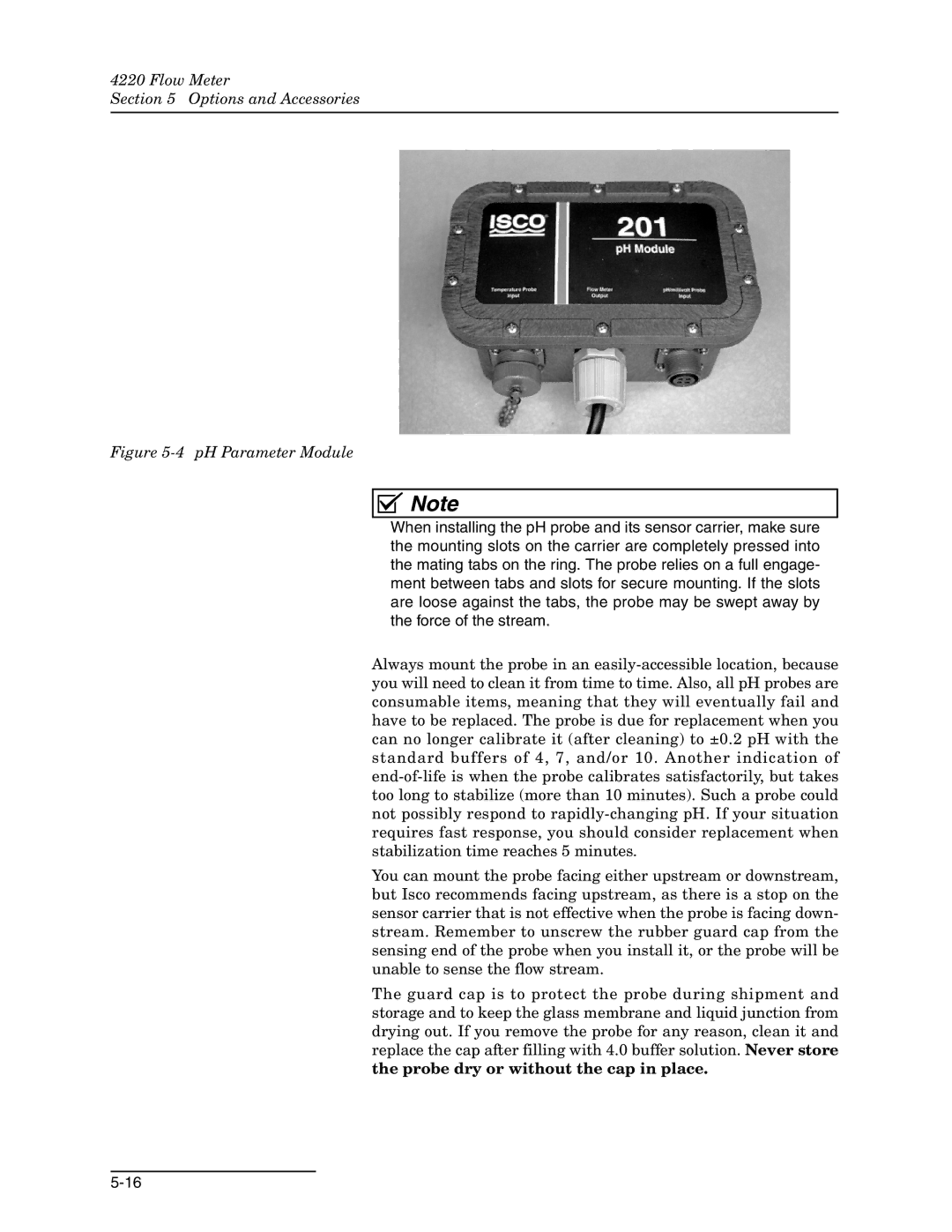
4220 Flow Meter
Section 5 Options and Accessories
Figure 5-4 pH Parameter Module
![]()
![]()
![]()
![]()
![]() Note
Note
When installing the pH probe and its sensor carrier, make sure the mounting slots on the carrier are completely pressed into the mating tabs on the ring. The probe relies on a full engage- ment between tabs and slots for secure mounting. If the slots are loose against the tabs, the probe may be swept away by the force of the stream.
Always mount the probe in an
You can mount the probe facing either upstream or downstream, but Isco recommends facing upstream, as there is a stop on the sensor carrier that is not effective when the probe is facing down- stream. Remember to unscrew the rubber guard cap from the sensing end of the probe when you install it, or the probe will be unable to sense the flow stream.
The guard cap is to protect the probe during shipment and storage and to keep the glass membrane and liquid junction from drying out. If you remove the probe for any reason, clean it and replace the cap after filling with 4.0 buffer solution. Never store the probe dry or without the cap in place.
